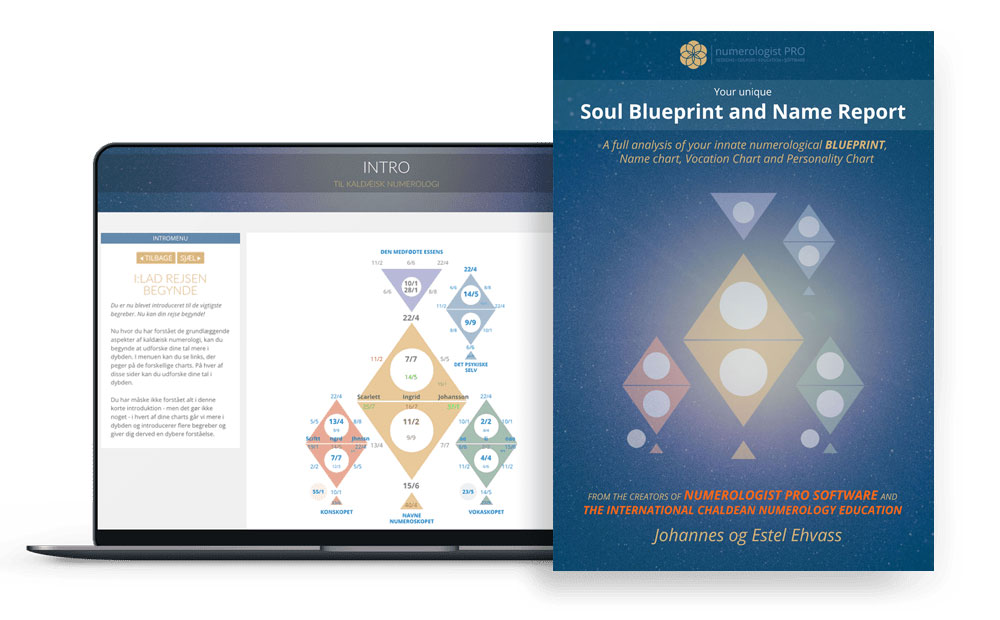Late Antiquity and The Transition Period

Johannes Ehvass
Welcome, dear reader! Together, we embark on a captivating journey into astrology, a timeless art and science that has accompanied humanity since its earliest days. Each astrological discovery not only mirrors the era and culture it emerged from but also feels like a celestial gift, as if the universe is directly speaking to us. Through these articles, I share with you the profound journey of how astrology has grown and evolved alongside us. Let's explore this cosmic connection that has, for millennia, enriched our understanding of ourselves and the universe around us.
Late Antiquity Astrology: The Transitional Tapestry

As the sun began to set on the Hellenistic era, the realm of astrology was undergoing a transformation, a metamorphosis that would see the confluence of various streams of thought.
This epoch, referred to as Late Antiquity, spanning from the 3rd to the 8th century CE, serves as the bridge between the sophisticated astrological practices of the Hellenistic age and the upcoming renaissance in the Islamic Golden Age.
The Setting of Late Antiquity
The era was characterized by both upheaval and synthesis. The Roman Empire, once a monolithic entity, split into the Western and Eastern (Byzantine) empires. As the west grappled with invasions and decline, the east, with its capital at Constantinople, emerged as a beacon of stability and learning.
Religious Transformation: Christianity, from being persecuted, transformed into the state religion under Emperor Constantine. This had profound implications for astrology, a practice often at odds with Christian orthodoxy.
Cultural Synthesis: While the west saw a decline, the Byzantine Empire and the Sassanian Empire became centers of learning, preserving classical knowledge and blending it with new discoveries.
Rhetorius the Egyptian and His Compendium
Amidst this backdrop, figures like Rhetorius the Egyptian stand out. Active in the 6th or 7th century CE in Alexandria, Rhetorius is best known for his Compendium. This work, a compilation, and commentary on earlier astrological treatises provide a panoramic view of Hellenistic astrological thought.
Content of the Compendium: Rhetorius’s work is a treasure trove, encompassing topics like zodiacal signs, houses, planetary periods, lots (or what would be known in Islamic astrology as Arabic Parts), and various methods of prediction.
Influence of Past Masters: Throughout his work, Rhetorius quotes extensively from prior astrologers such as Valens, Antiochus, and Porphyry. It’s through him that many fragments of earlier works survive.
Christian Influence: Unlike many of his predecessors, Rhetorius operated in a predominantly Christian milieu. His work reflects this, with references to the biblical figures and attempts to reconcile astrological thought with Christian beliefs.
Other Figures and Trends
Rhetorius was not alone in his endeavor. Other lesser-known figures like Olympiodorus the Younger and John Lydus contributed to the tapestry of Late Antique astrology.
Olympiodorus the Younger: A philosopher by training, Olympiodorus wrote commentaries on Plato and Aristotle. However, his foray into astrology, especially his work on dreams and their interpretation, adds a unique dimension to the understanding of this period.
John Lydus: Operating in Constantinople, Lydus’s work On the Months is a blend of history, calendar lore, and astrology. It’s a testament to the interwoven nature of various disciplines in this age.
Challenges and Controversies
The ascendancy of Christianity posed challenges. Church fathers like Augustine and John Chrysostom were vocal critics of astrology, viewing it as deterministic and incompatible with free will.
Astrology and Fate: Central to the controversy was the question of fate. If all was preordained in the stars, where did human free will and divine providence stand?
Persecutions: While many Christian emperors were known patrons of astrology, the practice faced periodic clampdowns. The closure of the Platonic Academy in Athens by Emperor Justinian in 529 CE marked a symbolic end to the classical intellectual traditions in the west.
Conclusion
The age of Late Antiquity, while transitional, was by no means a period of decline for astrology. Instead, it was an era of consolidation, where the rich traditions of the Hellenistic age were preserved, commented upon, and prepared for transmission to new cultures and epochs. Figures like Rhetorius the Egyptian stand as luminous beacons, guiding us through this intricate maze, and ensuring that the wisdom of yore didn’t fade into oblivion.

Johannes & Estel: Renowned authorities in Numerology, Astrology, and the esoteric arts. As the founders of Scandinavia's premier Numerology school, we're delighted to share our insights through this curated series on astrology. Dive in and discover the stars.
The Worlds Most Advanced Numerology Report

Your birthdate reveals your unique life purpose, potentials, talents, weaknesses, and karma in this life.
Your names show what you attract into your life regarding your career, relationships, happiness, money, and success.
GET THE REPORT HERE
Introduction to Astrology
The history of Astrology
Moving beyond deterministic astrology
Foundation of Astrology: Planets, Signs and Houses
Astrology and the Holographic Universe
The Holographic Universe
The Human Psyche as a Mirror to The Solar System
The Human Body as a Mirror to The Star Signs
Astrology Background
Egyptian Astrology
Mayan Astrology
Chinese Astrology
Indian Astrology - Jyotish
Celtic Astrology
Tibetan Astrology
Mesopotamian Astrology
Early Mesopotamian Astrology: The Dawn of Celestial Divination
Enuma Anu Enlil: The Epicenter of Babylonian Celestial Omen Interpretation
Babylonian and Chaldean Astrology
Babylonian and Chaldean Astrology
Chaldean influence and evolution
Chaldean Wisdom: Safeguarding and Transmitting Astrological Knowledge
Hellenistic Astrology
Hellenistic Astrology background
Claudius Ptolemy and Tetrabiblos
Vettius Valens
Dorotheus of Sidon
Persian Astrology
Persian Astrology background
Sassanian Astrology
Late Antiquity and The Transition Period
Late Antiquity and The Transition Period
Hellenistic to Islamic Transition: The Torchbearers of Astrological Wisdom
Islamic Golden Age
Arabian Astrology Background
Arabian Astrology Contributions
Medieval Astrology
Introduction: The Medieval Cosmos
Monastic Preservers: Astrological Knowledge in the Dark Ages
Astrology in Medieval Medicine
Kings, Queens, and Constellations: Astrology in the Medieval Court
The Church and the Stars: A Contentious Relationship
Universities and Scholastic Pursuits: Academic Astrology
Astronomy & Astrology: Tools of the Trade
Medieval Astrological Houses and the Synthesis of Traditions
Transition to the Renaissance: Humanism and the Celestial Arts
Reflections: Medieval Astrology's Echoes in Modern Practice
Astrological Art of the Middle Ages
Famous Medieval Astrologers
Medieval Astrological Texts
Renaissance Astrology
Renaissance Humanism and Astrology
Scientific Advancements and Astrology
The Social Fabric: Astrology in Everyday Renaissance Life
Court Astrologers of the Renaissance
Controversies and Conflicts: Astrology Under Scrutiny
Renaissance Texts and Authors: Continuation of a Tradition
Astrology and Art: Celestial Imagery in the Renaissance
Renaissance Astrological Practices: Evolutions and Innovations
End of the Renaissance: The Gradual Decline of Astrological Influence
Renaissance Astrology's Echo in the Modern World
Enlightenment Astrology
Introduction: The Enlightenment and Astrology
Challenging the Stars: Astrology's Critics during the Enlightenment
Astrology and the New World
Astrology in the 19th Century
The Dawn of Psychological Astrology
Astrology in the 20th Century: A Modern Renaissance
Astrological Associations and Schools
Modern Controversies and Astrology
Astrology and Popular Culture
Astrology and Technology
Current Trends and Future Directions in Astrology
Conclusion: Reflecting on Astrology's Evolution
The Planet Significances
The Sun in Astrology
The Moon in Astrology
Mercury in Astrology
Venus in Astrology
Mars in Astrology
Jupiter in Astrology
Saturn in Astrology
Uranus in Astrology
Neptune in Astrology
Pluto in Astrology
Chiron in Astrology
Black Moon Lilith in Astrology
Pars Fortuna in Astrology
Ceres in Astrology
Houses in Astrology
Introduction to Astrological Houses
The Angular Houses
The Succedent Houses
The Cadent Houses
The 1st House
The 2nd House
The 3rd House
The 4th House
The 5th House
The 6th House
The 7th House
The 8th House
The 9th House
The 10th House
The 11th House
The 12th House
Interaction Between Houses
Derived Houses, House Rulers, and Interceptions
Conclusion: Synthesizing House Knowledge
All Materials © 2023 & 2024 Numerologist PRO
Terms of Service: Information provided by Numerologist PRO and/or from this web site is not intended as advice (medical, psychological, financial or other), nor is it intended to replace your work with a qualified professional (medical or otherwise). You should maintain your relationship with your providers and consider the services of this site as informational only. Any information, stories, examples, or testimonials presented on this website do not constitute a warranty, guarantee, or prediction regarding the outcome of an individual. This web site is a sharing of knowledge and information of numerology/energy work based on the experiences of Numerologist PRO. You are encouraged to make your own decisions based on your own research and inner guidance. By booking and receiving services, you agree to fully release and hold harmless Numerologist PRO and all it's affiliated numerologists from and against any liability or claim that may arise out of or in connection with their service(s).
Numerologist PRO © 2021

CONTACT
numerologist@numerologistpro.com
LIKE US, and get free numerology tools, info about your personal numbers, best business dates of the year - and more!
YOUR FREE NUMEROSCOPE CHART
Enter your name and email below and get access to our free online numerology chart tool.